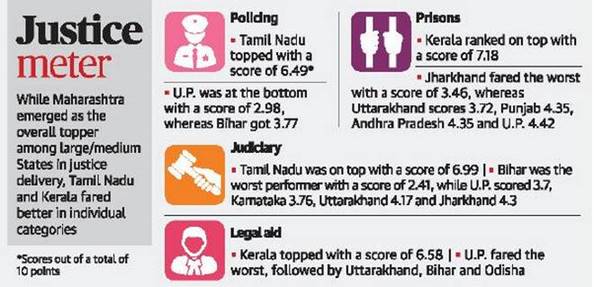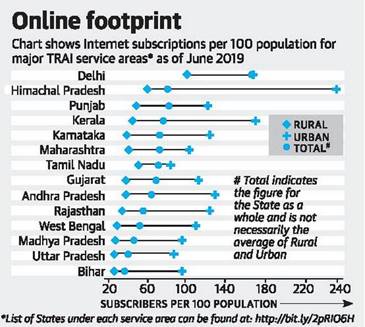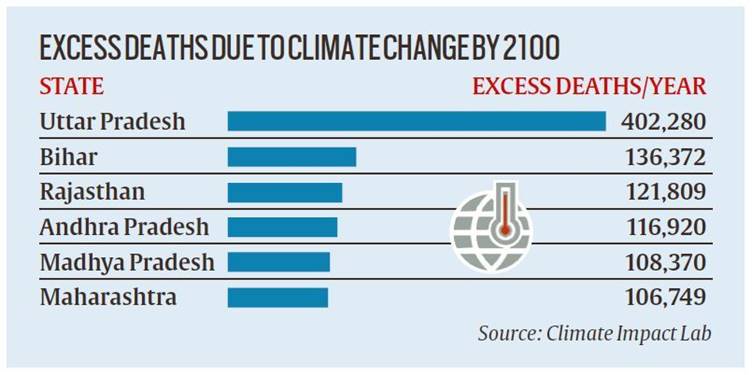



Ahead of the long-awaited Supreme Court judgment on the Babri Masjid-Ram Janma bhoomi litigation, the Centre has sent around 4,000 personnel of the Central Armed Police Forces to Ayodhya.
- They have sent 4000 personnel of Central Armed Police Forces to Ayodhya.
- Issued an advisory to all States to maintain “law and order”
- The Railway Protection Force (RPF) has identified 80 sensitive stations and asked its personnel to keep a tight vigil.
- RPF personnel have been asked to specially maintain security at places of worship inside or near the railway station’s compound.
- The Railway Protection Force cancelled leave of its staff and the personnel will be engaged in providing security cover to trains.
- Police chiefs have been asked to enhance foot patrolling in “vulnerable areas” that have been identified.
- The police have also been asked to prepare a “riot control scheme” for each area. It also includes access control and transportation plans in emergency situations.
Law and Order:
- 'Police' and 'Public Order' are State subjects under the Seventh Schedule to the Constitution of India and therefore, it is the primary duty of the State Governments to prevent, detect, register and investigate crime and prosecute the criminals.
- Central Government, however, supplements the efforts of the State Governments by providing them financial assistance for modernization of their Police Forces in terms of weaponry, communication, equipment, mobility, training and other infrastructure under the Scheme of Modernization of State Police Forces.
- Further, intelligence inputs are regularly shared by the Central Security and Intelligence Agencies with the State Law Enforcement Agencies to prevent crime and law and order related incidents.
- The National Crime Records Bureau (NCRB), a nodal agency under the Ministry of Home Affairs, is engaged in the process of collecting, compiling and analysing the crime statistics with a view to help the States to evolve appropriate strategies for better prevention and control of crime.
Maharashtra has topped the list of 18 large-medium States in the overall first-ever ranking of Indian States on justice delivery, followed by Kerala, Tamil Nadu, Punjab and Haryana.

This is according to the India Justice Report 2019, released by Tata Trusts in collaboration with Centre for Social Justice, Common Cause, and Commonwealth Human Rights Initiative.
Four pillars of justice delivery — police, judiciary, prisons and legal aid. It covered themes like infrastructure, human resources, diversity (gender, Scheduled Caste/Scheduled Tribe/Other Backward Class), budgets, workload and trends of past five years.
1. Best performing States scored less than 60% in their performance on capacity across the police, judiciary, prisons and legal aid.
2. The country has about 18,200 judges with about 23% sanctioned posts vacant.
3. Women are poorly represented in these pillars, constituting just 7% of the police.
4. Prisons are over-occupied at 114%, where 68% are under trials awaiting investigation, inquiry or trial.
5. Most States are not able to fully utilise the funds given to them by the Centre.
6. Increase in spending on the police, prisons and judiciary does not keep pace with the overall increase in State expenditure.
7. India’s per capita spend on free legal aid is 75 paisa per annum.

Kerala’s Fibre Optic Network project, pegged at Rs. 1,548 crores, would try to provide Internet to every household in the State. It will give free internet 20 lakh BPL households
- It is published by Internet and Mobile Association of India (IAMAI).
- State’s Internet penetration rate is the second highest in the country (54%), next only to Delhi NCR with 69% penetration.
- The report also notes that Kerala, Tamil Nadu and Delhi have the highest proportion of female Internet users.
Internet penetration rate: It corresponds to the percentage of the total population of a given country or region that uses the Internet.
A new study has projected that 1.5 million more Indians may die per year from extreme heat due to climate change by 2100, and India’s energy use will more than double in the next 20 years, driven largely by fossil fuels.

- Climate Impact Lab in collaboration with the Tata Centre for Development at the University of Chicago conducted it.
- If emissions continue to be as high as they are at present, India will see a death rate of about 60 per 100,000 by 2100.
- This projected death rate is double the current death rate from oral cancer in India, which is the most common cancer in the country.
- It says the average annual temperature in India is expected to increase from 24°C to 28°C.
- The number of extremely hot days (above 35°C) across India is expected to increase by over eight times, from 5.1 per year in 2010 to 42.8 in 2100.
- Odisha is projected to see the highest increase in the number of extremely hot days, at about 30 times more than what it is today.
- Mitigation of emissions will bring down the death rate to roughly about 10 per 100,000.
- The risks associated with extreme temperatures vary around the world and are dependent upon the wealth of a country.
Global ratings agency Moody’s Investors Service cut its outlook on the Government of India’s ratings to negative from stable, but affirmed the Baa2 foreign-currency and local-currency long-term issuer ratings.
- Its decision to change the outlook to negative reflects increasing risks that economic growth will remain materially lower than in the past.
- It partly reflects lower government and policy effectiveness at addressing long-standing economic and institutional weaknesses.
- Prolonged financial stress among rural households, weak job creation, and credit crunch among non-bank financial institutions (NBFIs), has increased the probability of a more entrenched slowdown.
- Prospects of further reforms that would support business investment and growth at high levels, and significantly broaden the narrow tax base, have diminished.
- Reduction in outlook is the first step towards an investment downgrade, as India is now just a notch above the investment grade country rating.
- An actual downgrade in country ratings can lead to massive foreign fund outflows.
- India continues to be among the fastest growing major economies in the world, and India’s relative standing remains unaffected.
- It has undertaken series of financial sector and other reforms to strengthen the economy as a whole.
- It has proactively taken policy decisions in response to the global slowdown.
- The fundamentals of the economy remain quite robust with inflation under check and bond yields low.

© 2025 iasgyan. All right reserved